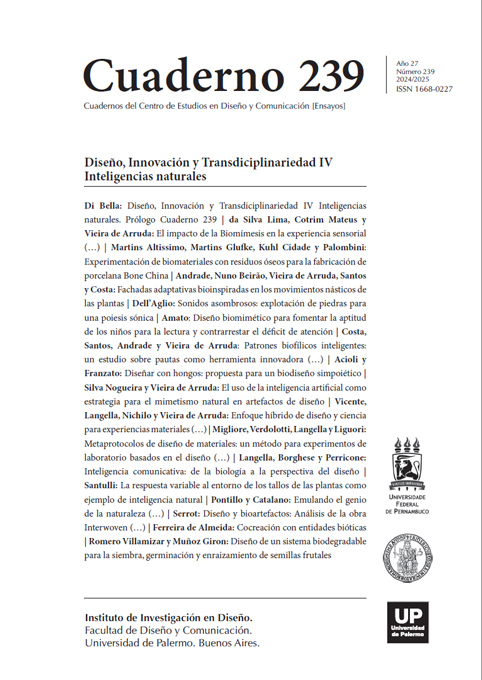Communicative intelligence: from biology to design perspectives
Abstract
In nature, organisms communicate to each other exchanging key information, primarily for intra and interspecific recognition (e.g., between parents and offspring, predators, members in a herd’s hierarchy)
References
Ancillotto, L., Pafundi, D., Cappa, F., Chaverri, G., Gamba, M., Cervo, R., & Russo, D. (2022).
Bats mimic hymenopteran insect sounds to deter predators. Current Biology, 32(9),
R408-R409.
Bahadur, B., Sampica, J. D., Tchon, J. L., & Marzen, V. P. (2013). Direct-Dry-Film Optical
Bonding: Finding New Applications. Information Display, 29(4), 34-39.
Baumeister, R. F. (2014). Self-regulation, ego depletion, and inhibition. Neuropsychologia,
, 313-319.
Biró, L. P., Kertész, K., Vértesy, Z., Márk, G. I., Bálint, Z., Lousse, V., & Vigneron, J. P. (2007).
Living photonic crystals: butterfly scales—nanostructure and optical properties. Materials
Science and Engineering: C, 27(5-8), 941-946.
Bradbury, J. W., & Vehrencamp, S. L. (1998). Principles of animal communication (Vol. 132).
Sunderland, MA: Sinauer Associates.
Los autores/as que publiquen en esta revista ceden los derechos de autor y de publicación a "Cuadernos del Centro de Estudios de Diseño y Comunicación", Aceptando el registro de su trabajo bajo una licencia de atribución de Creative Commons, que permite a terceros utilizar lo publicado siempre que de el crédito pertinente a los autores y a esta revista.


